BUILT FOR TRUST. DESIGNED FOR SCALE
We’re Building a Civic Infrastructure That Does Not Yet Exist
This didn’t start as a product. It started with a reasonable question that went unanswered.
I questioned an enforcement practice, specifically a bylaw ticket that didn’t make sense, which in turn, raised a deeper question: If laws are enforced without regard for real world conditions, what logic is actually at work?
When I tried to understand it, to verify it, to trace where and how it was issued, I hit a wall. There is no dashboard. No audit trail. No logical civic memory.
That experience became the blueprint for this platform: a system designed for the public, built to protect contributors, and structured to reveal patterns not personal data.
What this platform will never do:
- No privileged access for enforcement agencies. They can see public dashboards like anyone else, but never access aggregated insights, APIs, or internal tools.
- No insurer partnerships. Insurers cannot license data, access risk layers, or use insights for pricing, profiling, or claims decisions.
- No surveillance ads. No scraped profiles. No commercial scoring models.
- No raw images or personal data stored or shared. Ever.
What the platform is built to support:
- Contributors who want transparency without risk.
- Journalists exposing enforcement patterns and civic blind spots.
- Legal clinics using verified data to build appeals and dispute workflows.
- Researchers comparing enforcement across cities and timeframes.
- Civic tech orgs turning anonymized data into public reform tools.
- Cities that want public trust more than quiet control.
Licensing is strictly limited to public interest use, and every partnership is grounded in purpose.
We’ve mapped how every flow works from ticket uploads to public stats, and we’ve architected it all before launch. This is transparency that stands up to scrutiny. Not as a slogan, as a system.
It’s not live yet. But it’s real, planned in detail and ready to be built.
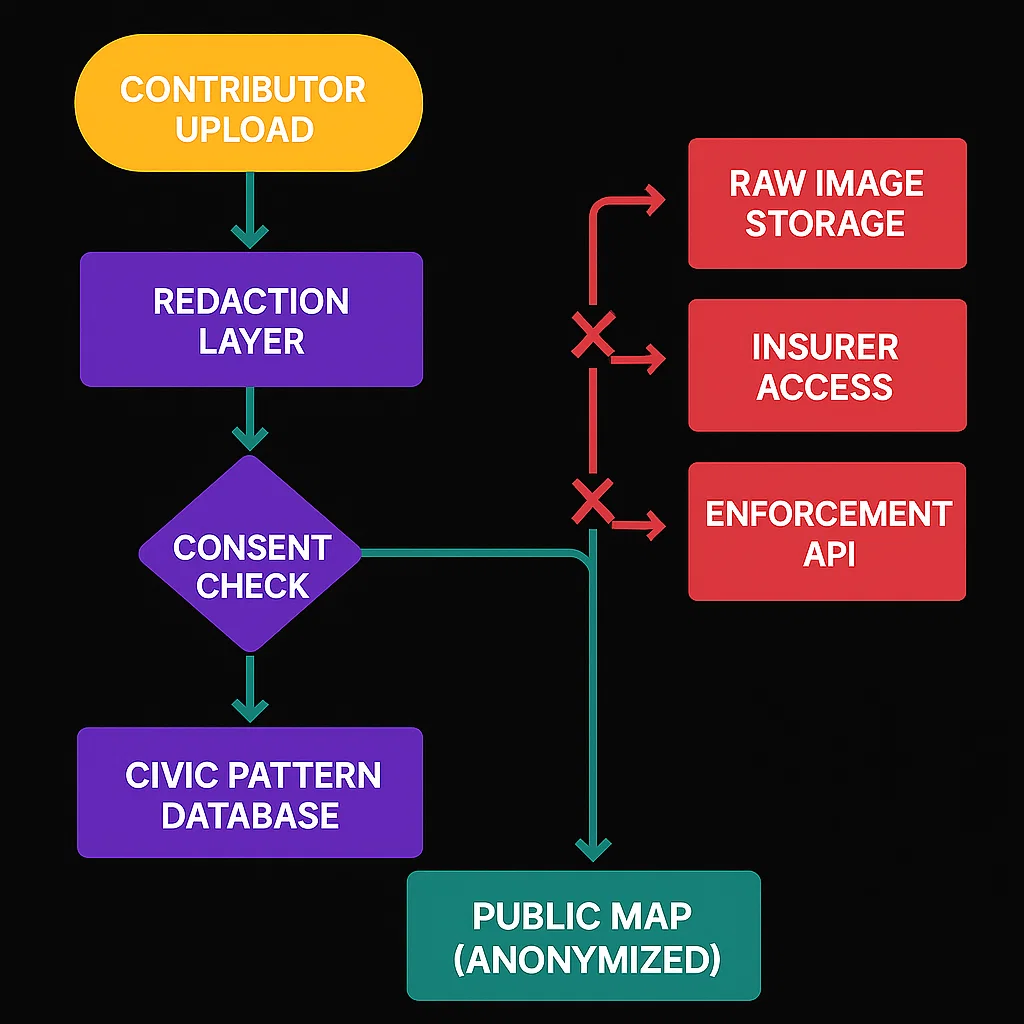
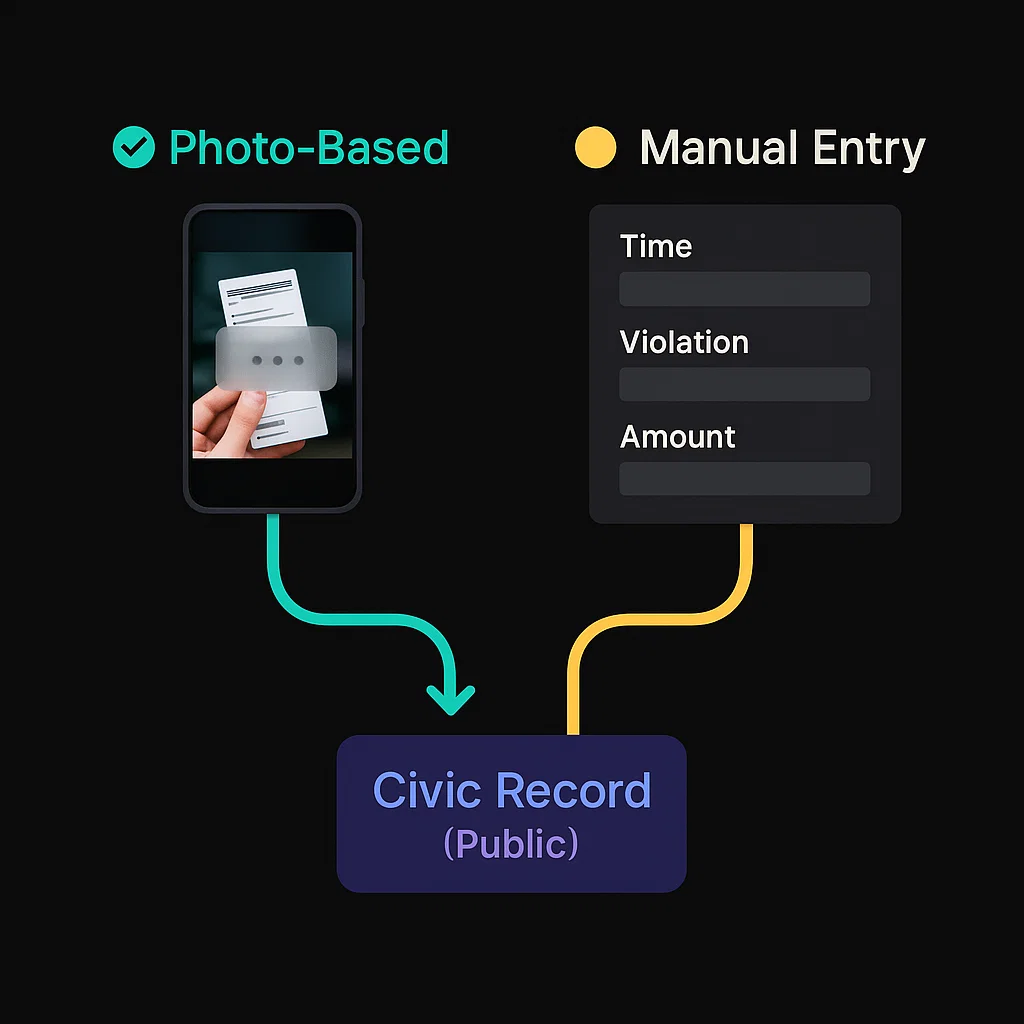
DESIGNED FOR PUBLIC CONTRIBUTION. NOT OFFICIAL PERMISSION
The Platform Starts With Real People Reporting Real Tickets
This platform isn’t powered by city feeds or scraped data. It starts with people, individuals who received a ticket and want to make that event visible, accountable, and useful beyond just paying the fine.
When someone uploads a ticket or enters its details manually, the system captures what matters: location, time, violation type, fine amount. It blurs what doesn’t: names, plate numbers, addresses. What’s submitted becomes part of a shared record of enforcement activity, visible to anyone.
Milestone 1 begins with traffic enforcement. Later milestones will expand the platform to include FOIs, bylaw data, and legal recovery workflows.
Every report adds visibility where there was none. Over time, these reports show not just isolated tickets, but enforcement patterns and civic questions that deserve answers.
TWO TYPES OF TICKET REPORTS. BOTH COUNT
How the System Distinguishes Between Verified and Community Ticket Reports
Once live, the platform will support two ways to submit ticket related data: verified ticket reports and community ticket reports. Both contribute to a shared record of enforcement activity, but each follows a different path and is labeled clearly to reflect its source.
Verified ticket reports begin with a photo of an actual ticket. The system is designed to extract structured details like location, timestamp, violation type, and fine amount. It will automatically blur names, plate numbers, and other personal information. These reports are labeled as verified and will carry the highest level of trust in public maps, dashboards, and statistics.
Community ticket reports are manually submitted by contributors who don’t have a photo but still want to report what happened. The system will prompt for the same key details, and apply the same redaction standards. These reports are labeled as community ticket reports. They help surface new locations, highlight unusual enforcement patterns, and flag zones that deserve more visibility, even if they can’t be independently confirmed yet.
Every ticket report, whether verified or community, is processed under the same rules: no raw images are stored, no personal data is kept, and no enforcement body has access to backend tools or datasets. Labeling is always visible. Transparency is built in. The system is designed to value both accuracy and participation, and to make that balance public.
Other types of community reporting, like submitting camera locations, sharing stories, or responding to surveys, will be part of future milestones. This section focuses only on ticket reports tied to red light and speed enforcement, as defined in Milestone 1.
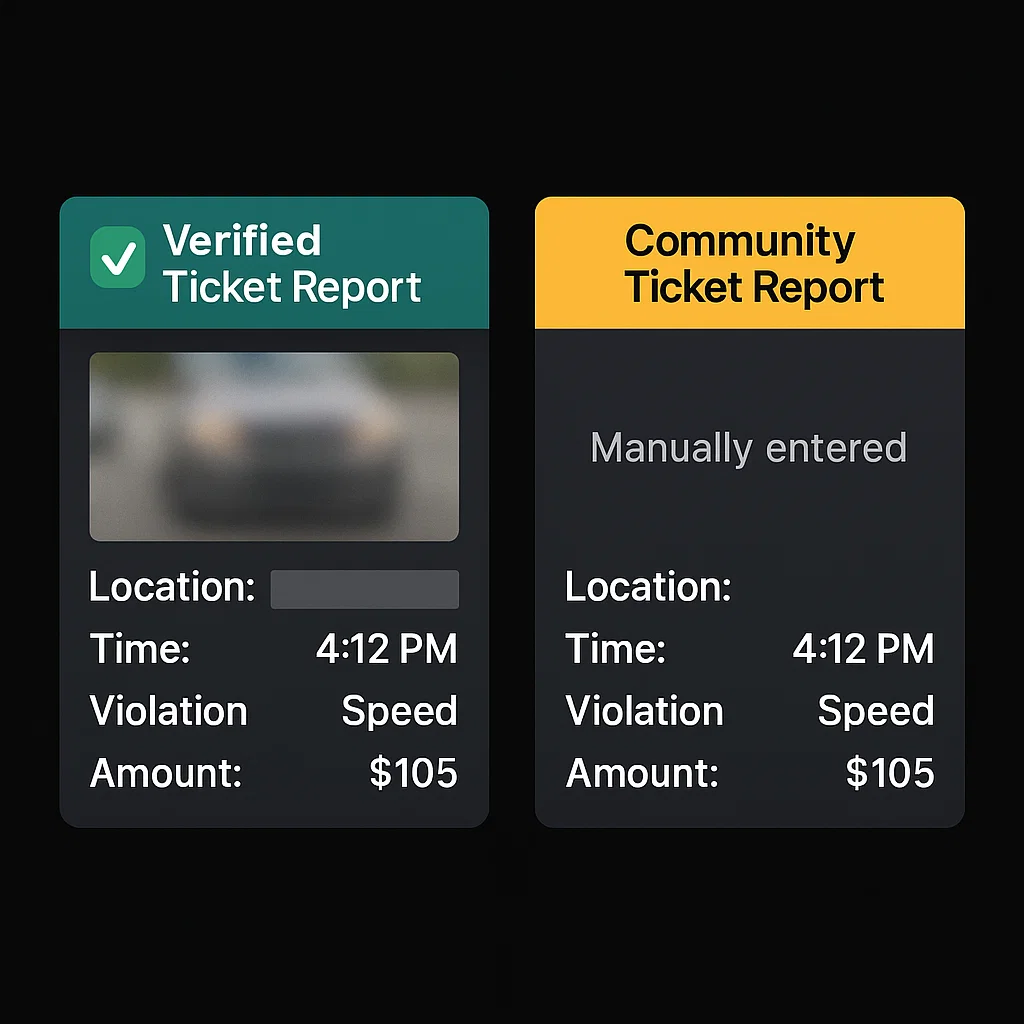
BUILT TO CAPTURE PATTERNS NOT PERSONAL DATA
How the Platform Protects Privacy Before Any Data Is Ever Stored
The system is designed to collect only what’s needed to understand enforcement, and nothing more. It captures the basics: violation type, fine amount, location, date, time, and jurisdiction. Optional details like vehicle type may also be submitted, if included on the ticket.
Personal details are never stored. Names, plate numbers, and addresses are automatically blurred or stripped before anything is saved. Raw ticket images are discarded after redaction. At no point are these files retained or linked to an account.
Redaction happens before the data enters any public dashboard or civic database. Once processed, what remains is a neutral record, structured, anonymized, and built to reveal enforcement trends without exposing individuals.
Anyone can view limited public stats. But to contribute, you need to register. That’s how the system protects data integrity without compromising personal privacy.
The goal isn’t to track individuals. It’s to make enforcement visible without putting anyone at risk.
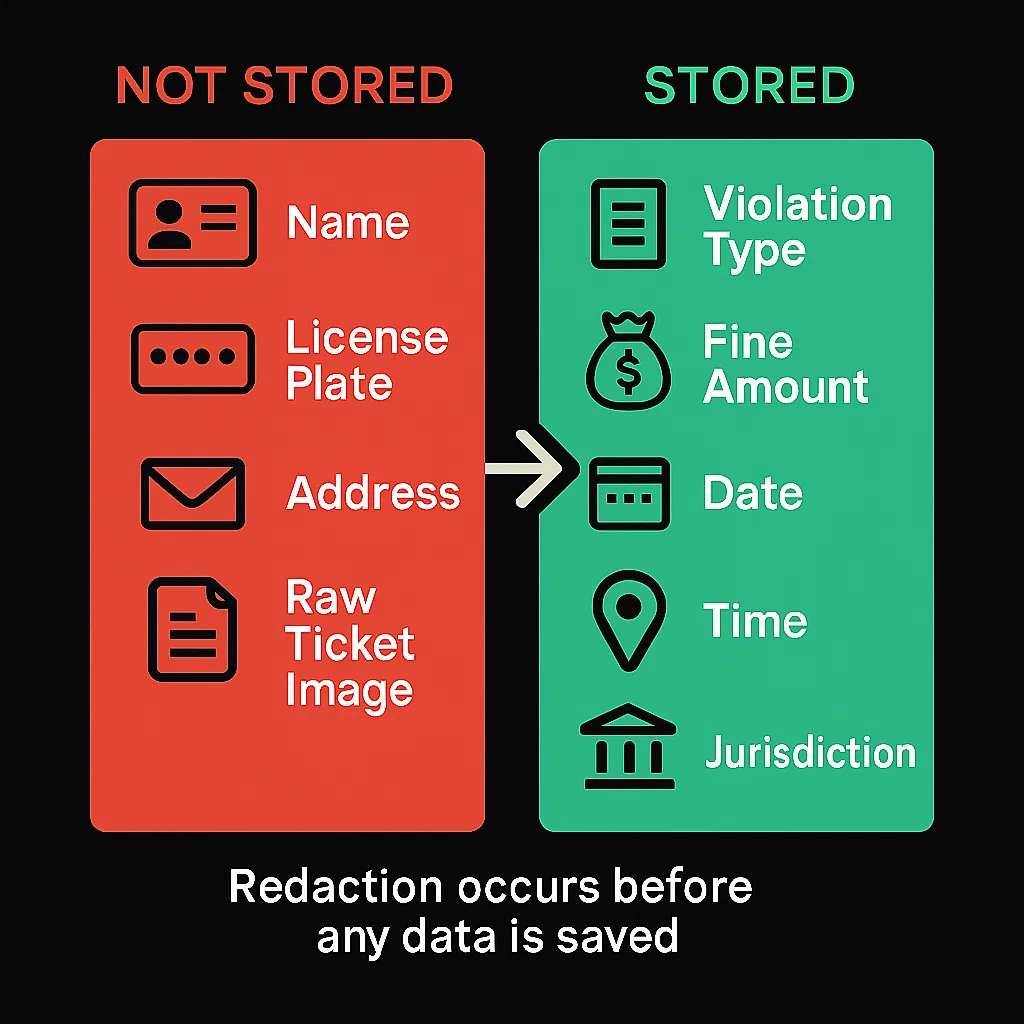
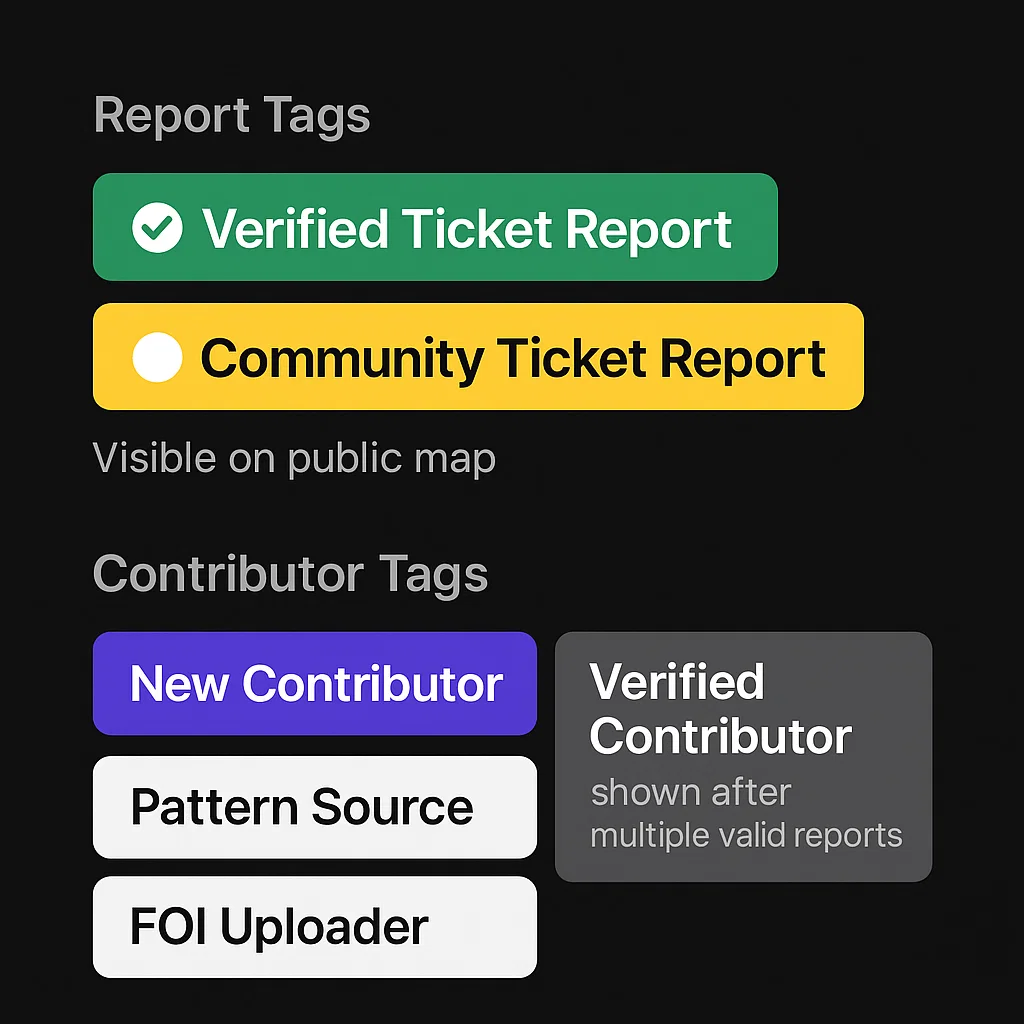
TRUST ISN’T ASSUMED. IT’S MADE VISIBLE
How the Platform Labels Ticket Reports and Builds Contributor Credibility
The platform is designed to label every ticket report clearly, so that anyone viewing the data understands where it came from and how much weight it carries.
Verified ticket reports are those submitted with a photo and are treated as high confidence data. They appear directly in public stats, maps, and enforcement trends. The system extracts structured information and confirms basic validity before including the report in high-level metrics.
Community ticket reports are manually entered. They follow the same redaction standards, but are labeled differently. These reports are still shown on maps and dashboards, but they are not blended with verified data in core summaries. They help surface patterns early and flag zones that need closer review.
This labeling system is part of a larger trust model. Contributor accounts are structured to reflect not just what has been submitted, but how it was submitted. Over time, contributors who submit validated information — whether tickets, FOIs, camera locations, or other civic records, build weight and standing within the system. That standing helps determine access to deeper tools, filters, and visibility tiers.
This isn’t a game. It’s a public memory system with transparency built in. Verified doesn’t mean perfect. Community doesn’t mean wrong. Every contribution counts, but the difference is always made clear.
AI IS HERE TO HELP. NOT TO DECIDE
How the Platform Uses AI Without Losing Human Control
The platform uses AI to support contributors, improve data quality, and protect privacy, not to make decisions on their behalf. Every use of AI is visible, inspectable, and grounded in public value.
When a verified ticket report is submitted, AI helps extract structured information from the image: violation type, location, timestamp, fine amount. It also automatically blurs personal details before anything is saved. For community ticket reports, AI assists with field validation, spelling corrections, and consistent formatting.
AI will also support conversational interaction. Once dashboards are live, users will be able to ask questions directly, like “show me the total fine amounts in New York last week” and receive meaningful, structured answers from public data. These tools are meant to reduce friction and improve access, without introducing hidden layers or filtered results.
What AI does not do is just as important. It does not determine which reports are accepted. It does not score contributors. It does not assign weight or decide what the public gets to see. Every decision about inclusion, labeling, and access is based on transparent rules, not black box logic.
AI helps structure civic data, guide contributors, and protect privacy. But it never replaces human input. And it never overrides the principles this platform was built on.
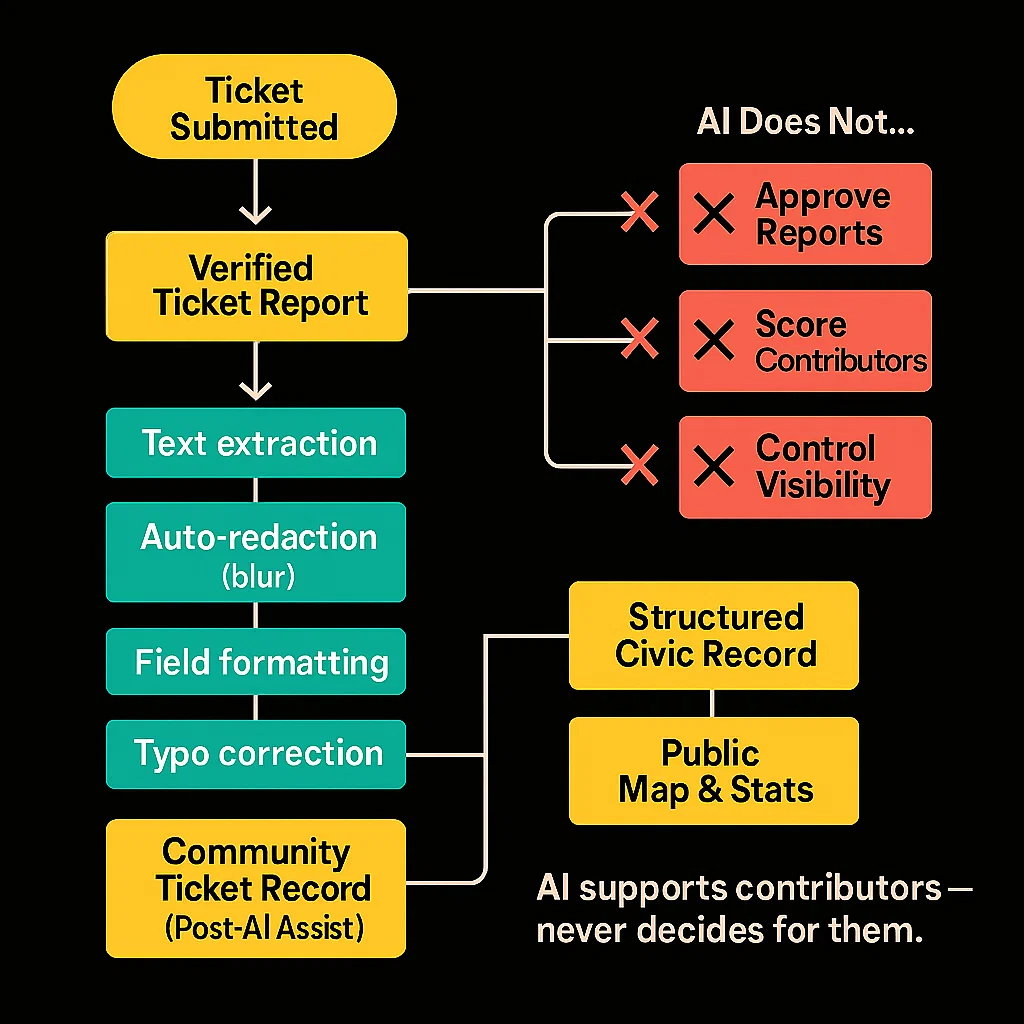
FROM INDIVIDUAL REPORTS TO COLLECTIVE INSIGHT
How Ticket Data Transforms Into Public Patterns and Civic Oversight
Every ticket report contributes to a larger view of enforcement activity. A single report marks one moment. As more reports are submitted, patterns begin to emerge: repeated intersections, fine spikes at certain times, neighborhoods where enforcement concentrates or disappears.
The platform is designed to structure these patterns so they can be explored, cross referenced, and publicly understood. Dashboards and maps are built to display real world enforcement trends, not city fed summaries or abstract charts. The difference is that these patterns come directly from contributors, not filtered through official sources. This is a true public record.
Verified ticket reports shape core stats and trendlines. Community ticket reports help surface early signals and zone level attention. Both types are included, visibly labeled, transparently weighted, and governed by data integrity rules.
Future milestones will expand this picture. FOI documents related to automated enforcement, municipal bylaw overlays, and public legal outcomes are already mapped to integrate with existing ticket data. These additional layers are designed to validate trends, reveal contradictions, and build even more trust in the public record.
The value of this platform isn’t in the volume of reports. It’s in how those reports help make enforcement visible and accountable over time.
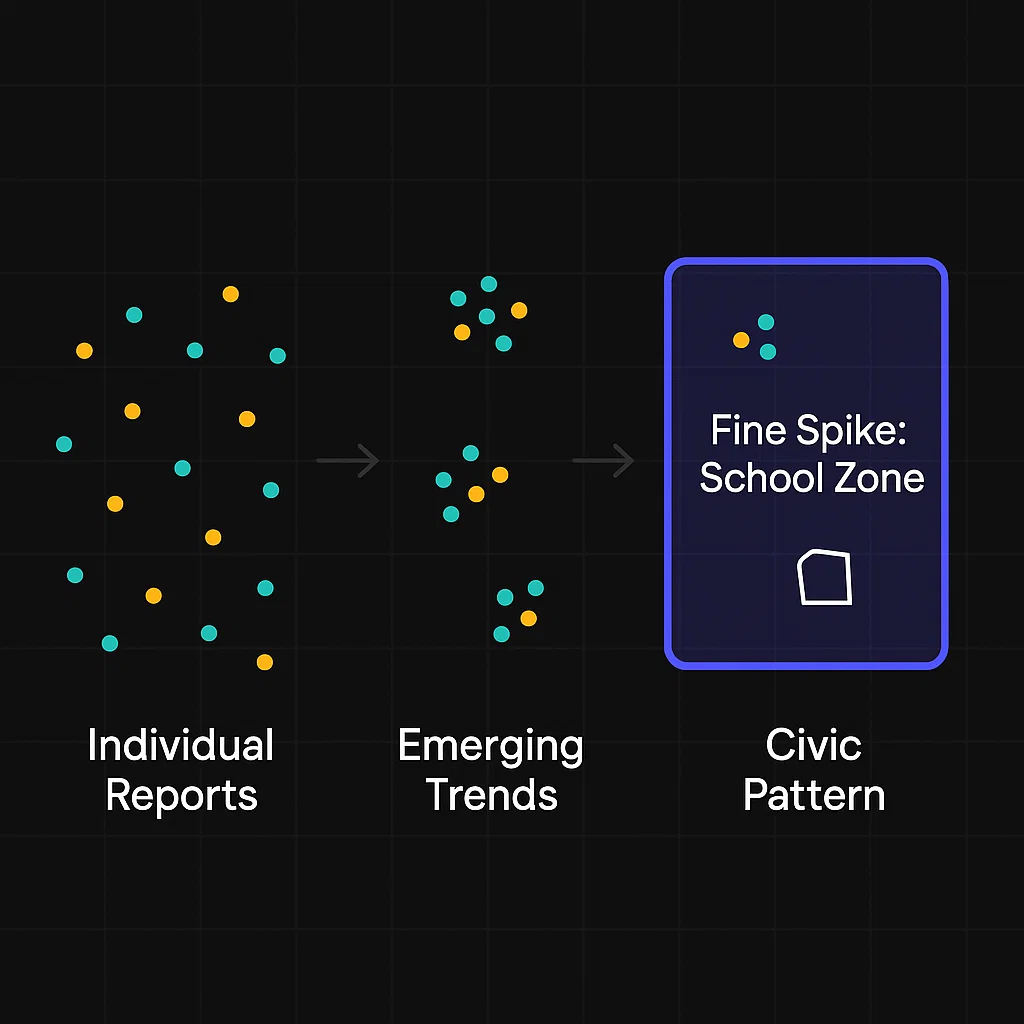
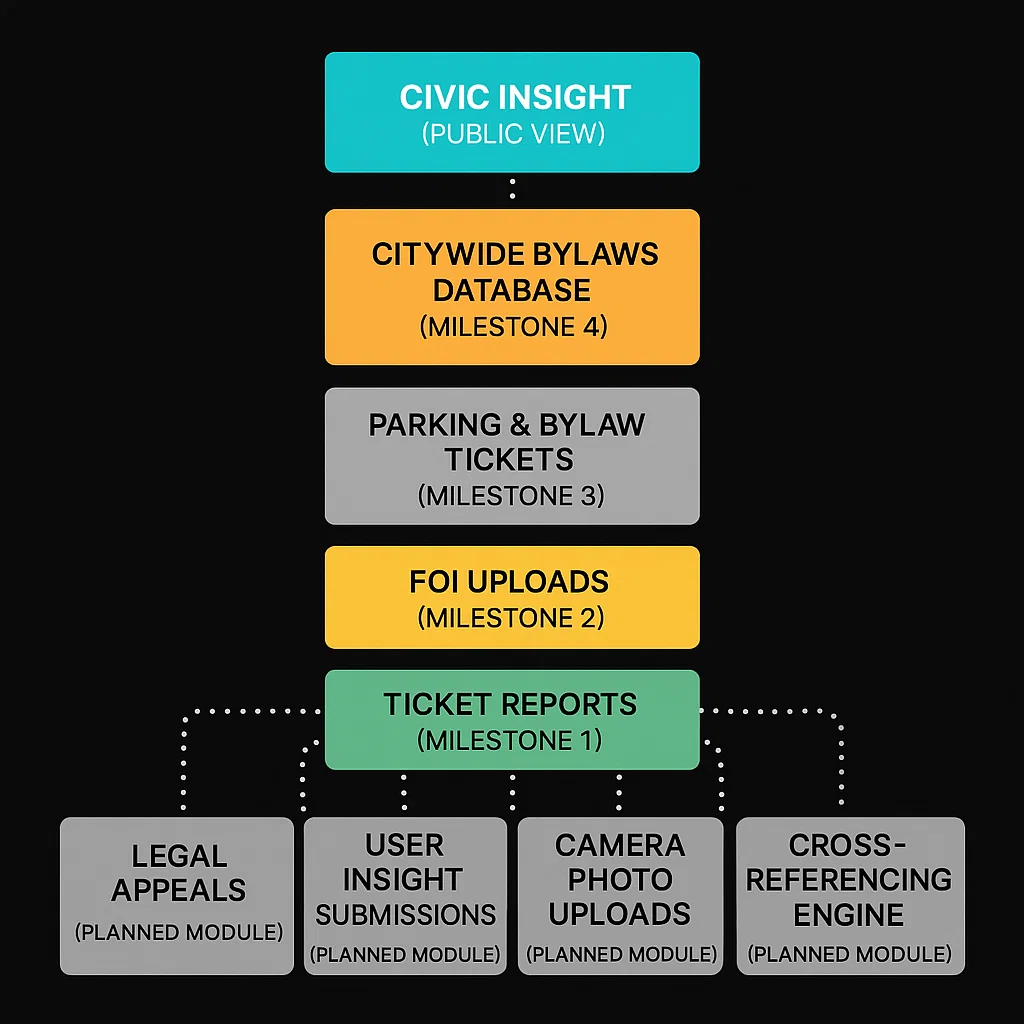
BUILT TO EXPAND. ONE LAYER AT A TIME
What the Platform Will Grow Into, and Why It Matters
This platform began with one goal: make automated enforcement visible to the public. But enforcement doesn’t exist in isolation, and neither will this system.
Each milestone is designed to add a new layer of public insight. Starting with ticket reports, the platform will grow to include FOI documents, bylaw overlays, legal recovery tools, and user submitted camera data. These layers aren’t stitched on later, they’ve been mapped from the start.
That means contributors won’t just report tickets. They’ll also be able to upload FOIs, flag intersections, track appeal outcomes, and share lived experiences that intersect with enforcement data. Every piece contributes to a more complete picture, and a more accountable civic record.
As these milestones are developed, new patterns will come into focus, FOI documents tied to specific camera vendors, bylaw changes that coincide with fine spikes, and appeals that point to biased enforcement. These cross referenced layers are part of the plan, not future speculation.
This isn’t a set of features. It’s civic infrastructure, built in public, governed by principle, and expanding only in ways that increase transparency, not complexity.
Learn More About How It All Fits Together
What you’ve just read is the planned structure for 200 Brady Street, designed before launch, grounded in governance, and ready to be built when funding allows. You can explore the full context now and see exactly how each part of the system will take shape.
See the full milestone plan
Understand the sequence of development, from verified ticket reporting to FOI integration, legal tools, and public policy records.
Read the governance framework
See the safeguards, licensing rules, and contributor protections that will guide every build stage.
Review public resources
Browse references, key terms, and example records that frame how this system will operate in the public interest.
Get involved
Be part of building civic transparency. Join our public mailing list for updates, or request the pitch deck if you’re exploring aligned funding opportunities.
